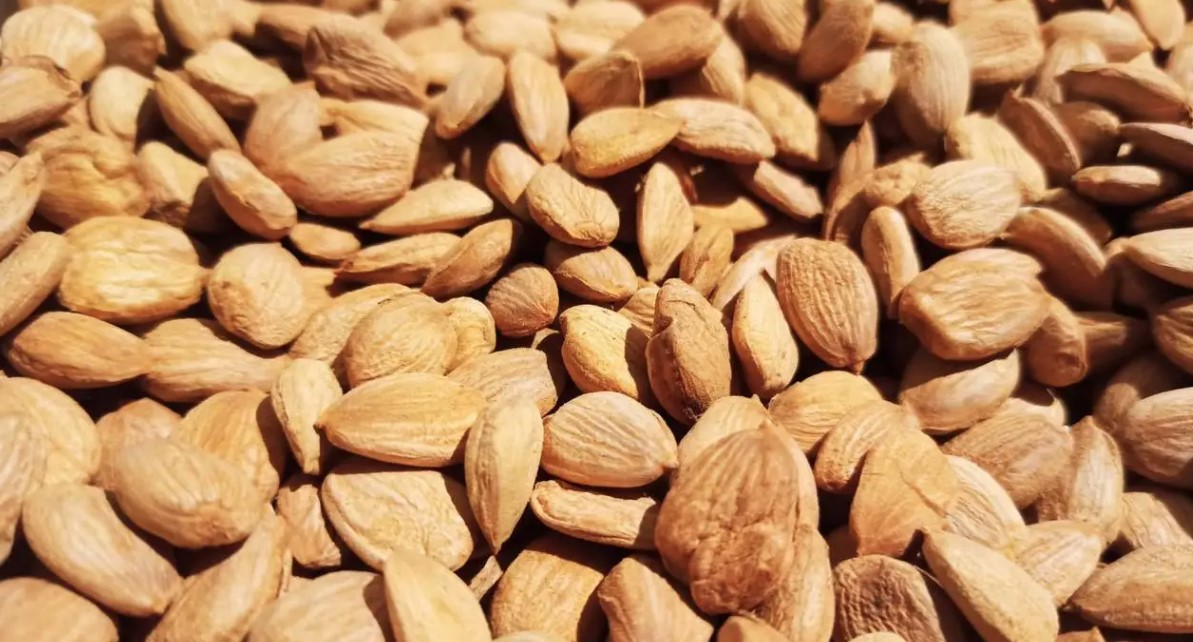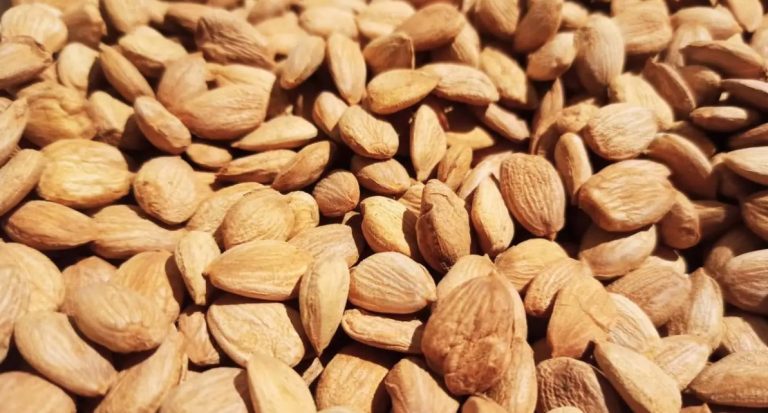Hydrocyanic acid is a highly toxic substance that is also found in some foods. We will show you which plants produce the toxic substance and which foods you should avoid.
Prussic Acid: A highly toxic substance

Prussic acid (or hydrogen cyanide) is a highly toxic substance that is deadly even in small quantities. The smell of the colorless liquid is slightly reminiscent of bitter almonds, but not everyone can smell it. Prussic acid is water-soluble and, with a boiling point of 26°C, is an extremely volatile substance.
Throughout history, the poison has been used against humans several times; among other things during National Socialism and for the execution of the death penalty in the USA until 1999.
Prussic acid: effect of the toxic substance
The absorption of hydrocyanic acid inhibits an important enzyme in the human organism that is responsible for cell respiration. The result is what appears to be a lack of oxygen in the cells, which leads to internal suffocation and death within seconds.
Just one to two milligrams of hydrocyanic acid per kilogram of body weight can be deadly. The amount that is still harmless can vary greatly from person to person, which is why the tolerance range of the human body is quite wide at 1-60 milligrams per kilogram of body mass.
Hydrocyanic acid in food
There are some foods that contain hydrocyanic acid. Over 1000 plants worldwide are known to produce the toxic substance. This serves as a natural protection against feeding and germination inhibitors, for example with stone fruit. Only after the pericarp has decomposed can the hydrocyanic acid evaporate and the seeds begin to germinate.
These plant foods contain hydrocyanic acid:
Immature bamboo shoots (up to 8 g/kg)
Bitter Almonds (2.5 g/kg)
Bitter apricot kernels
stone fruit pits
cassava tuber
kidney bean
lima bean
yam
Certain varieties of sweet potato
sweet millet
linseed
You should be particularly careful with bitter almonds and apricot kernels. Even 5-10 bitter almonds or 10 drops of bitter almond oil can have a fatal effect on children. A safe alternative is bitter almond flavoring. Bitter apricot kernels also have a relatively high hydrocyanic acid content.
Unlike bitter almonds, apricot kernels are not only sold in controlled small quantities, but are offered in 200 gram packs. You should therefore be careful when using apricot kernels as a dietary supplement with an alleged healing effect on cancer, because the amygdalin they contain splits off hydrocyanic acid when the kernels are digested.
The Federal Institute for Risk Assessment (BfR) warns against eating more than two bitter apricot kernels a day and emphasizes that there is no scientific evidence of any healing effects. Sweet apricot kernels can also contain hydrocyanic acid.
Eating unripe bamboo shoots is particularly dangerous because they have a very high hydrocyanic acid content (up to eight grams per kilo). In Asian countries, there are repeated cases of poisoning from bamboo shoots if they are not sufficiently cooked.
Hydrocyanic acid in food: How to protect yourself

In order to render the toxic hydrocyanic acid in food harmless, it is sufficient for you to boil the vegetables beforehand. With a boiling point of 26°C, the poison evaporates during cooking and you can safely eat foods that have a low level of hydrocyanic acid when raw. Cassava tubers or haricot beans, for example, must be boiled before consumption.
Also: Small amounts of hydrocyanic acid, which occur in natural foods, can be rendered harmless by the body itself. The enzyme rhodanase converts the poison into the substance rhodanide, which is harmless to humans.
You should largely avoid foods that contain relatively large amounts of hydrocyanic acid (such as bitter almonds or apricot kernels).

